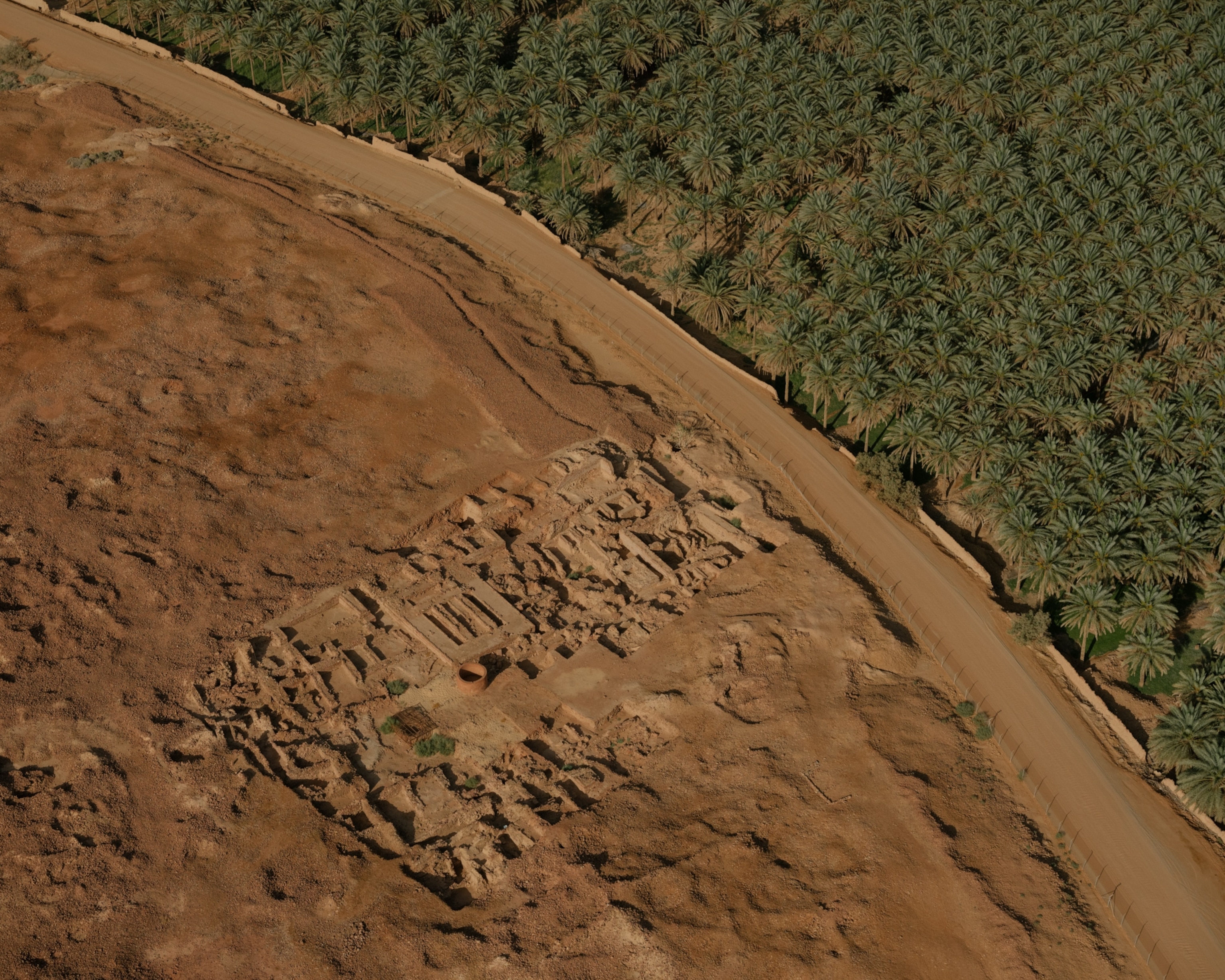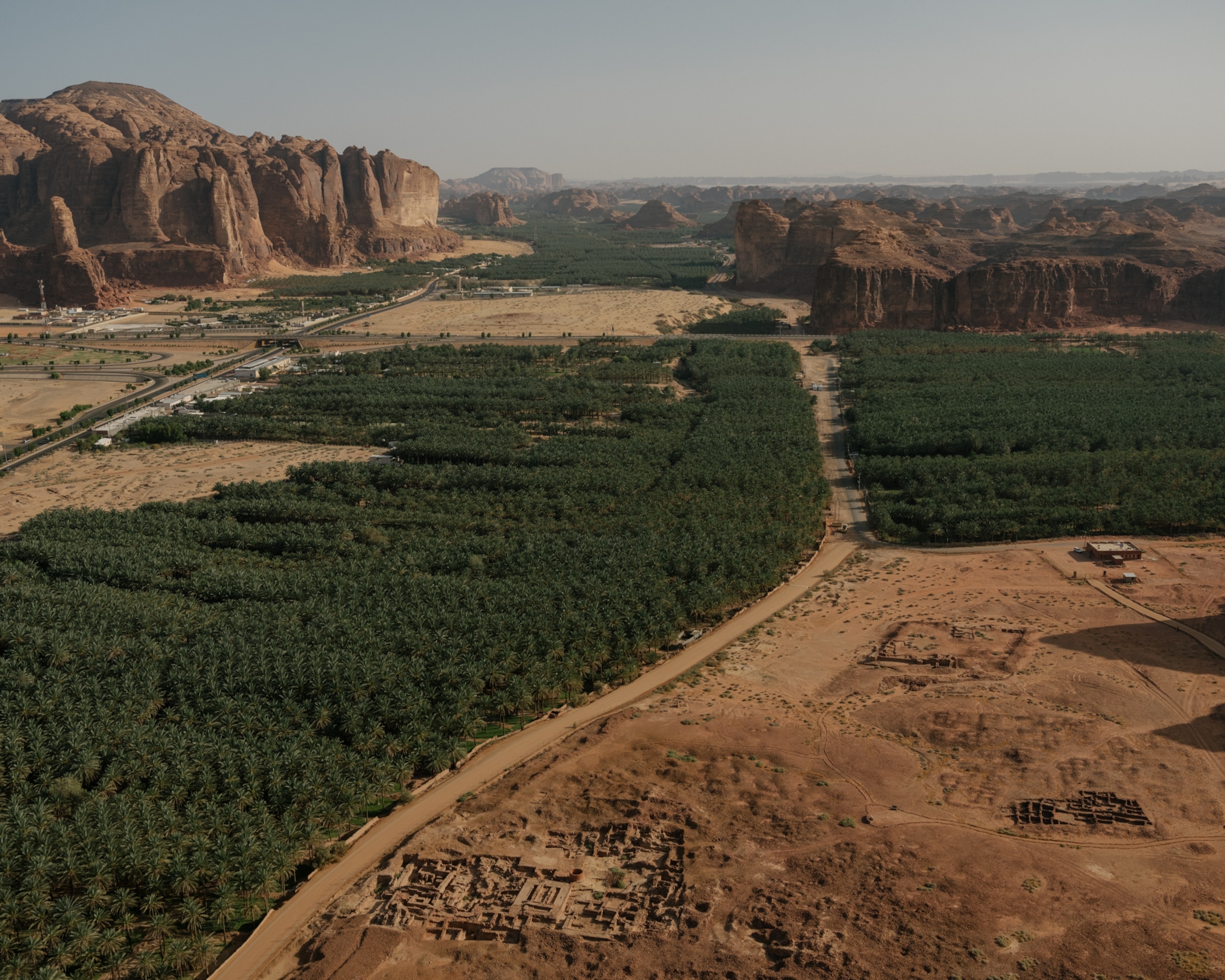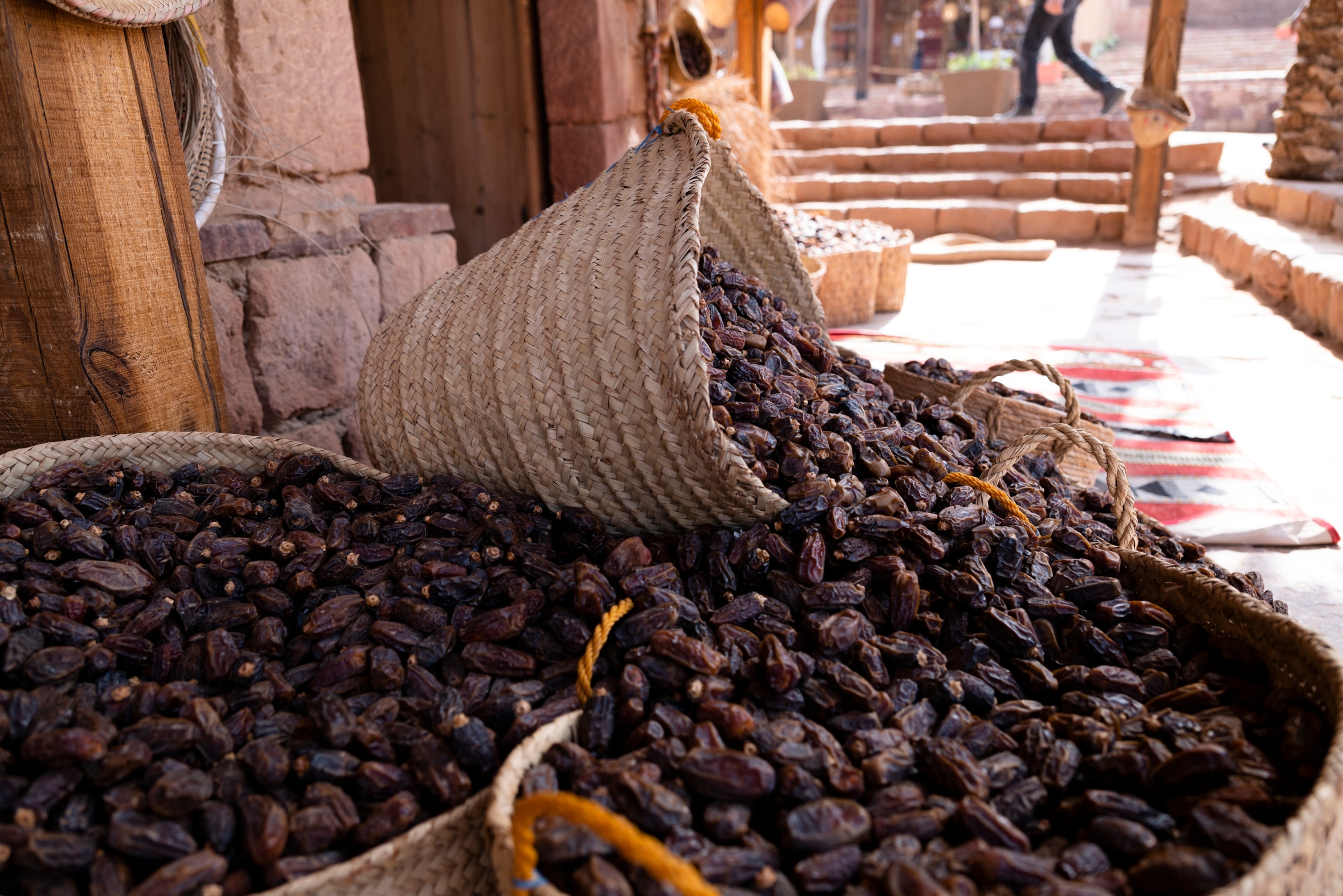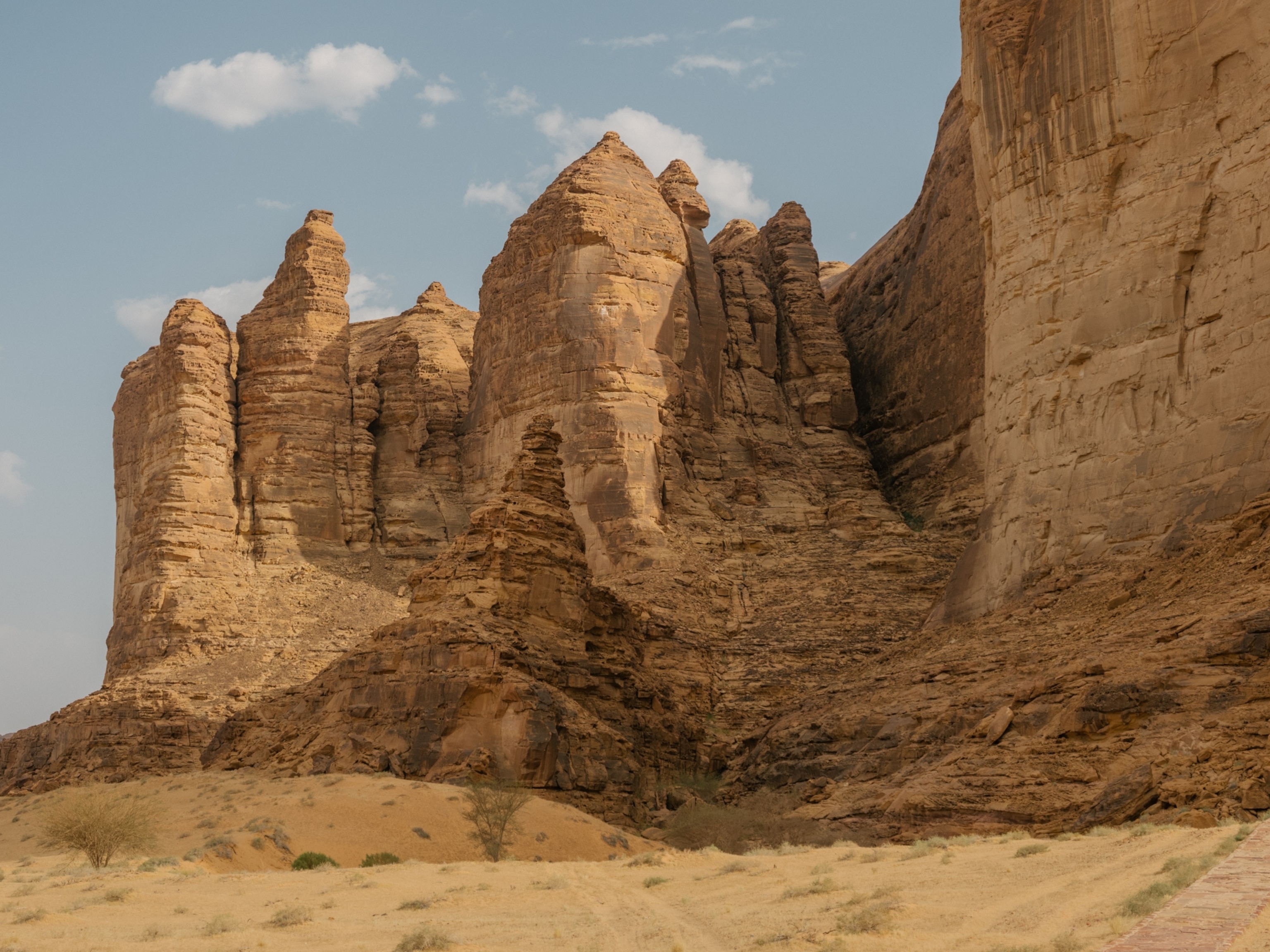
AlUla: Mastering the desert’s water
Oases make deserts navigable and livable, becoming a natural focus for life. In AlUla, skillful water management helped create the oasis and turn it into a power base for rulers.
Humans can survive longer without food than without water: significantly longer. It’s one of the harsh realities that makes the dry deserts of Saudi Arabia such a challenging place to live. Then there’s the searing heat in a landscape that offers little shade, and the often infertile sands in which plants struggle to grow. It seems an unlikely place for farms, cities, and civilizations to emerge, but that’s what happened in the AlUla valley between the foothills of Saudi Arabia’s Hijaz Mountains. Because even in the desert, there are places where water can be found to nurture life and allow plants, animals, and humans to thrive. The AlUla valley cradles an oasis, an island of habitable land amid Saudi Arabia’s vast seas of sand, a haven that can support communities and offer succor to travelers.
The story of AlUla begins millions of years ago when a wetter climate carved a huge water catchment of great valleys that converged to feed the wadi that runs through the region. Much of the water flows through underground systems, becoming trapped and stored as an aquifer. Topped up by distant rains, the aquifer raised the water table close to the surface to create a wetland in which plants could grow, and to this rare source of food and drink flocked animals and, ultimately, humans. AlUla’s earliest inhabitants lived a nomadic hunter-gatherer lifestyle, perhaps shading beneath native acacia trees, and hunting gazelle while drinking from natural springs and pooled water at the surface. But AlUla was blessed with more than water: it also had fertile soils. This enabled later successive peoples to settle and develop irrigated agriculture, growing crops ranging from palm dates and citrus fruits to wheat and barley, creating the oasis.
Farming’s ability to support a large population lifted AlUla beyond being a valuable watering hole for desert travelers to being somewhere that could grow and develop. Merchant caravans carrying incense, spices, and other luxury goods from southern Arabia to markets in Egypt, the Mediterranean, and Mesopotamia relied on the oasis for water, and were no doubt forced to pay as they traveled through. While AlUla’s rulers (and others) grew wealthy on this trade, farming fueled population growth so that powerful kingdoms could emerge—the Dadanites, Lihyanites, and later Nabataeans. Underpinning these kingdoms were their abilities to manipulate and maximize the supply of water for agriculture.

In order to create and sustain an oasis, humans must find, manage, and use the available water wisely. While water bubbling up from natural springs and seasonal rains might temporarily fill wadis, to make the most of it, people needed to take control of the water. One of the earliest ways was to dig wells. The city of Hegra alone had 130 wells, probably all excavated at around the same time. While most tapped into groundwater 10 meters below the surface, the deepest is 20 meters and a remarkable seven meters wide. The unusual diameter of Hegra’s wells makes them more like cisterns used for storing rainwater, and they may have been an innovative hybrid system drawing from both aquifer and surface flow. Either way, the wells stored vast volumes of water for long periods, supporting AlUla’s people and agriculture.
To irrigate AlUla’s fields, early farmers likely used animals to haul goatskins of water from wells to be tipped into surface channels. However, by the early Islamic period a more sophisticated water-management system had emerged: qanats. These gently sloping underground channels tapped into the water table at a high point, such as at the base of a mountain, and used gravity with a carefully calculated slope to carry the water so that the channel surfaced close to an agricultural plain. AlUla’s extensive network of qanats made it possible to farm large strips of land. Such major engineering projects, involving immense collective effort, suggest that improving water supplies was a priority, possibly initially for AlUla’s rulers, but by the 20th century it was certainly operated by a cooperative community.

Beyond agriculture, a consciousness of water pervaded many areas of AlUlan society, and it likely played a role in ancient rituals. This is suggested by the monolithic circular sandstone basin outside the temple of Dhu Ghabat in Dadan. Carved and placed by the early first millennium BCE, the basin is nearly four meters in diameter and more than two meters deep—it could hold 27,000 liters of water filled from the well next to it. Similar smaller basins are found at other sites in Dadan and Hegra, suggesting the ritual importance of water in the AlUla region.
Many inscriptions of prayers in Jabal Ikmah, near Dadan, ask the gods to bring “plentiful spring rains,” a plea that reveals both the importance and the insecurity of the water supply. When rains did come, the Nabataeans in Hegra used ceramic pipes to move rainwater away from houses and into the streets, and its famous tomb facades are protected by channels that prevent rain eroding the delicately carved sandstone. To harness these great rains, they dug additional channels that moved the runoff into great cisterns for storage.
As the incense trade shifted and then waned in the new millennium, the wealth extracted from travelers diminished. However, with the coming of Islam and the pilgrimage route to Makkah, the oasis again became a vital watering hole. The Umayyad caliphs were particularly attentive, easing the passage of pilgrims by digging wells and building birkahs, great open-air reservoirs. One grateful traveler wrote affectionately of Qurh, in AlUla, “it is possessed of very cheap dates and excellent bread and copious springs of water.” It’s a description we can recognize today, with modern AlUla still verdant and bountiful, producing 90,000 tons of dates each year. But none of it would be possible without water. In the desolation of the desert, it’s millennia of skillful water management that has made AlUla a place of plenty, capable of supporting communities, cities, and even kings.

Journey through time to discover the rich history of AlUla here.



